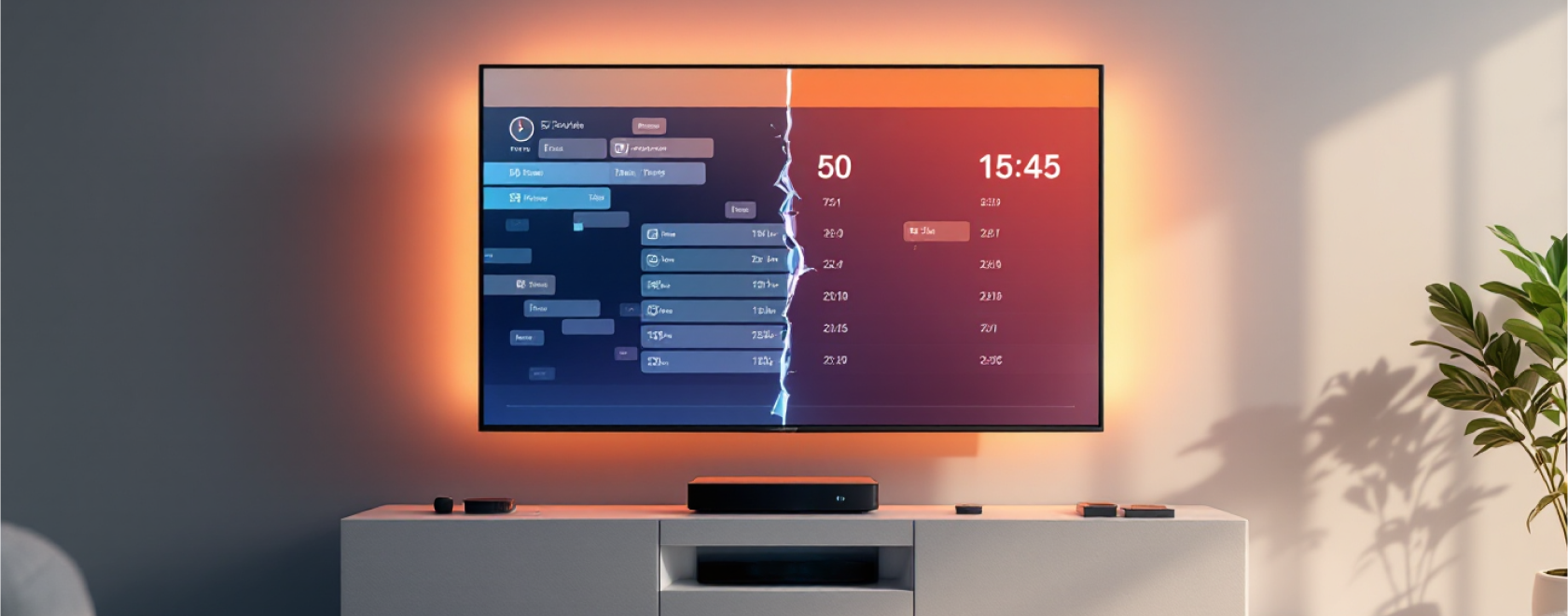For many IPTV users, one of the most frustrating issues is discovering that the electronic program guide (EPG) on their device does not align with the actual broadcast times of their favorite channels. This problem manifests as a time shift—programs appearing an hour early, an hour late, or sometimes off by several hours. Such discrepancies are especially common among users of IPTV set-top boxes and media players purchased online, since these devices are designed to operate across multiple regions and time zones. At the heart of this problem lies a complex interaction of time zones, daylight saving time (DST), and the way EPG data is provided by content suppliers.
When the EPG is out of sync, customers may miss live broadcasts, record the wrong shows, or simply lose confidence in their IPTV service. Understanding the root causes of these mismatches is therefore critical to resolving them and maintaining a seamless viewing experience.
How Time Zones Affect EPG Data
Electronic program guides rely on metadata files that include time stamps for every listed program. These time stamps are generated in a standard format, typically based on Coordinated Universal Time (UTC). When the IPTV device retrieves the EPG, it must convert these UTC times into the local time zone of the user. If the time zone settings on the device are wrong, or if the EPG provider fails to indicate the correct offset, the result is a noticeable time shift.
Modern IPTV IPTV set-top boxes and media players generally allow users to select their time zone manually. However, some devices attempt to detect the time zone automatically based on network or location data, which can be unreliable, especially for customers using VPNs or living near time zone borders. This is why even well-configured devices can sometimes show program schedules that are one hour ahead or behind the actual broadcast time.
The Role of Daylight Saving Time (DST)
Daylight saving time further complicates matters. In many regions, clocks shift forward or backward by one hour during certain months. If either the IPTV device or the EPG data fails to account for DST correctly, the entire schedule may become offset. This is particularly common during the first few days after a DST transition, when not all servers and devices have updated to the new time.
Some IPTV devices automatically adjust for DST based on the system clock, while others rely on manual settings. Misalignment between the EPG’s time zone and the device’s internal DST rules can cause persistent or intermittent time shifts. In some cases, customers need to update their firmware or software to ensure proper DST handling.
Technical Approaches to Fixing EPG Shift
Resolving an EPG mismatch starts with verifying the device’s internal clock. First, ensure that the system time and date are accurate. Even a small discrepancy between the device clock and real-world time can magnify into a visible EPG offset. Most IPTV set-top boxes and media players support synchronization with online time servers, which provides an accurate reference.
Once the system clock is confirmed, the next step is to check time zone settings. Manually selecting the correct time zone is usually the most reliable approach. If the device allows it, disabling automatic time zone detection can also help prevent future discrepancies.
If time zone settings are correct but the EPG still shows a shift, the issue may lie with the IPTV provider’s EPG feed. Many EPG providers include an offset field that can be adjusted at the user or device level. For instance, some interfaces allow you to manually add or subtract hours from the schedule to match your local broadcast time. Applying this offset carefully can restore accurate program listings without waiting for the provider to fix their data.
Firmware and Software Considerations
Modern IPTV hardware often receives regular firmware updates designed to address time zone and DST issues. These updates can improve how the device interprets EPG data, synchronize more effectively with network time servers, and adjust automatically to DST changes. Customers should regularly check for and install updates to ensure their devices handle time-related changes correctly.
Software-based IPTV applications running on smart TVs or media players may also need configuration. Some apps maintain their own time zone or EPG offset settings independent of the device. In such cases, both the app and the system must be aligned to the same time zone and DST policy to avoid conflicts.
The Importance of Reliable EPG Sources
Not all EPG data sources are created equal. Free or unofficial EPG feeds may not consistently update their time zone or DST data, while reputable providers typically maintain accurate time stamps for each region. Retailers of IPTV set-top boxes and media players should educate their customers about choosing reliable EPG sources and provide guidance on how to configure their devices to use them. This approach minimizes customer complaints and enhances overall satisfaction.
Moreover, using region-specific EPG feeds rather than global ones can further reduce mismatches. Region-specific feeds are generally optimized for local time zones and DST practices, making them a better choice for customers who want accurate scheduling information.
EPG mismatches can undermine the IPTV experience, but they are rarely unsolvable. By understanding how time zones, DST, and EPG data interact, customers can take practical steps to fix schedule discrepancies on their set-top boxes and media players. Ensuring the device clock is accurate, selecting the correct time zone, applying manual offsets when needed, and using reliable EPG sources will almost always resolve the issue. Keeping device firmware and software up to date ensures these settings remain effective over time. With these measures in place, IPTV users can enjoy uninterrupted, precisely timed access to their favorite programs.
